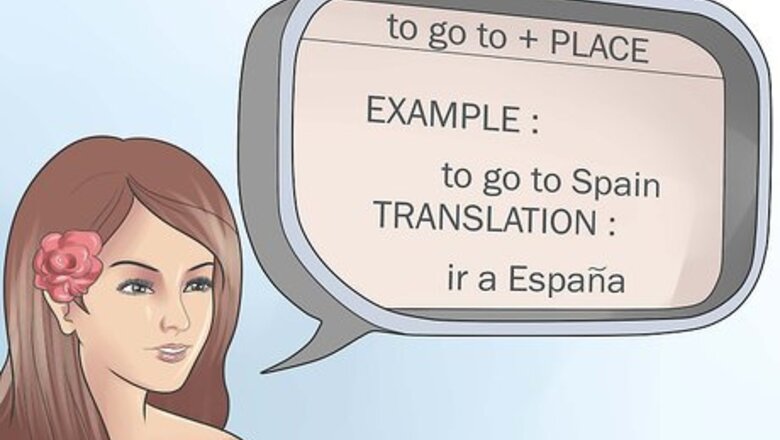
views
Using "A"

Use "a" for movement and destinations. When the English "to" is synonymous for "toward," the Spanish "a" is the most suitable translation. It is also the most suitable when someone is going to a certain destination. Example: to go to Spain Translation: ir a" España Example: to go to the library Translation: ir a la biblioteca

Stick with "a" when expressing indirect objects. When an action is done to another person or something is given to another person, the "to" used in reference to the other person or indirect object of the sentence is usually translated to "a." Example: Maria gave the book to her brother. Translation: Maria dio el libro a su hermano.
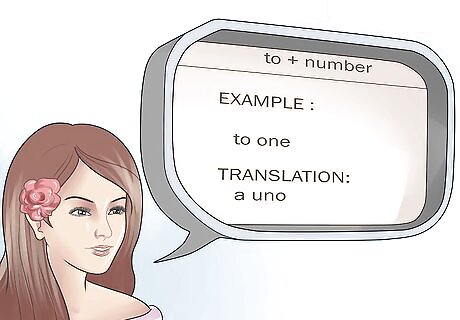
Express a proportion or ratio with “a.” When "to" is used in a numerical proportion, translate it to "a." Example: He won with a vote of three to one. Translation: Ganó con un voto de tres a uno.

Define relationships and comparisons with "a." When one object is described in relation or comparison to another object, translate the "to" to "a." Example: the book to the left of the lamp Translation: el libro a la izquierda de la lámpara

Explain intention with "a." In expressions using "to" to describe someone's intentions, translate the word to "a." Example: He went to study. Translation: Se fue a estudiar.
Using "Hasta"
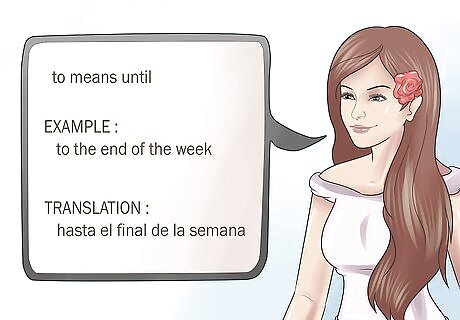
Use "hasta" when meaning “until.” In expressions for which "to" actually means "until," "hasta" is the most accurate translation. Example: to the end of the week Translation hasta el final de la semana
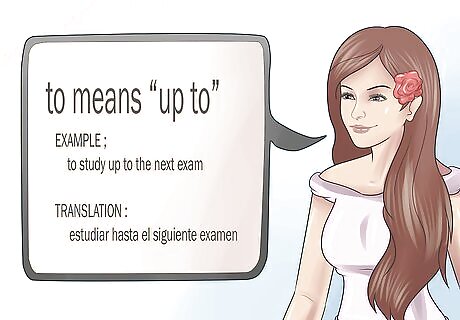
Translate "up to" as "hasta." If a condition is true up to a certain point, use hasta. Example: to study up to the next exam Translation: estudiar hasta el siguiente examen
Using "Hacia"

Use "hacia" to express movement. Hacia can also be used in expressions when "to" stands for "towards." Example: to the left Translation: hacia la izquierda
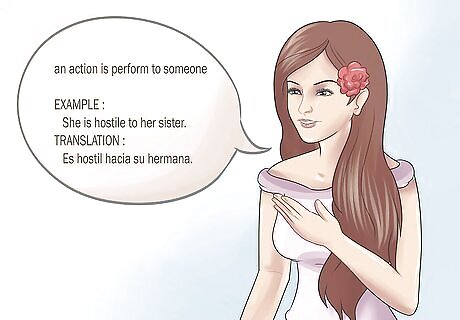
Define a recipient of action with "hacia." If an attitude or action is performed to someone or something, "hacia" can be used. Example: She is hostile to her sister. Translation: Es hostil hacia su hermana.
Using Less Common Translations
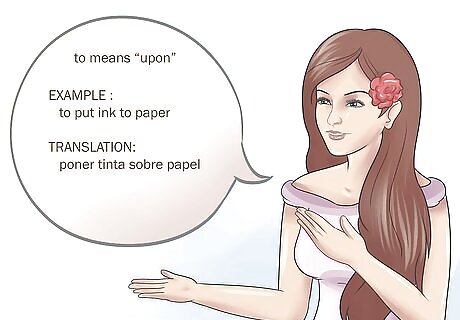
Opt for "sobre" for "to" conditions meaning "upon." If something is put to or upon something, "sobre" is an appropriate translation. Example: to put ink to paper Translation: poner tinta sobre papel
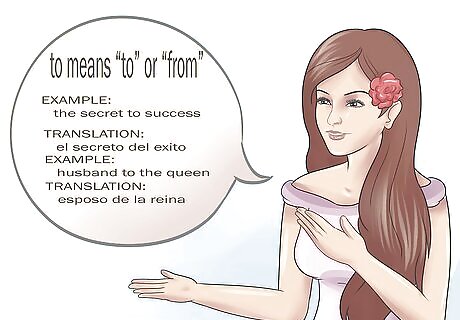
Use “de” when “to” stands for “of” or “from.” This is true when to indicates possession or defines relationships. Example: the secret to success Translation: el secreto del éxito Example: husband to the queen Translation: esposo de la reina

Define ratios with "contra." Numerical ratios can be expressed with contra instead of a. Example: He won with a vote of three to one. Translation: Ganó con un voto de tres contra uno.




















Comments
0 comment